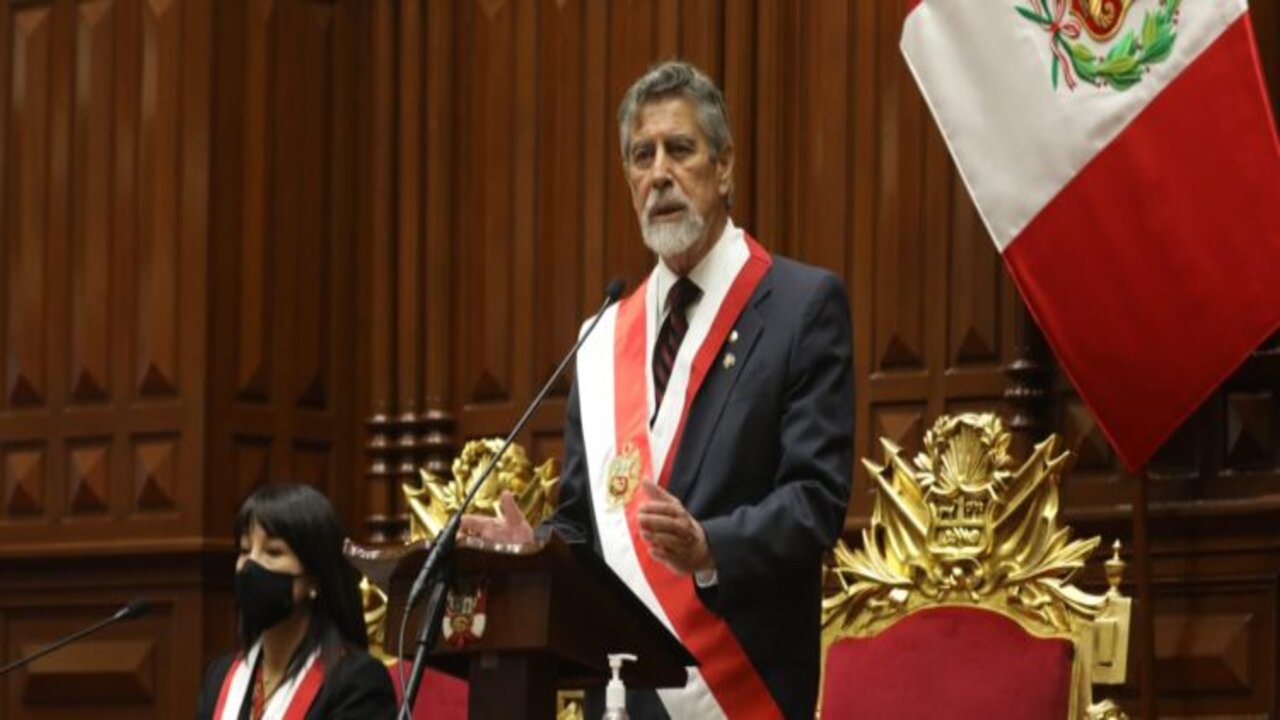The Perpetual Peruvian Crisis: Some Notes on Its Causes and the Uncertain Political Future
Published:
“In less than two weeks, Peru has experienced one of the worst political crises in decades. What happened, and why is it highly likely that the crisis will repeat?”

The crisis
Since Peru returned to democracy in the 2000s, a political crisis like the current one had not been witnessed. In the last two weeks:
- Congress ousted President Martín Vizcarra, sparking a wave of protests that authorities violently repressed.
- Two university students, Jack Pintado aged 22, and Inti Sotelo aged 24, were killed, and dozens of protesters were reported missing.
- The new president, Manuel Merino, resigned from his position due to public rejection.
- For an entire day, Congress couldn’t agree on assigning the presidential role.
- Finally, on November 16, Francisco Sagasti was appointed President of the Republic, the third in a week.
Similar to other Latin American countries, as Tomas Dosek notes, Peru is a breeding ground for social upheaval: high poverty rates, inequality, informality, the pandemic, abuse of power, and institutional weakness have created a conducive environment for the crisis.
However, to understand and explain the reason for this particular political instability, it is necessary to focus on the system of government and the political party model in Peru. Both factors can explain the crisis and foresee what is to come.
A political weapon
Peru has a presidential system of government with certain elements of parliamentary systems, such as the vote of censure and the vote of confidence.
These elements aim to balance power between the Executive and the Legislative so that one does not abuse the other. One of these tools is the presidential vacancy by a legislative vote. With this instrument, Congress can accuse and remove the president for:
- treason against the homeland;
- impeding elections;
- dissolving Congress without the conditions set out in the Constitution being fulfilled;
- hindering the functioning of electoral bodies, or
- moral incapacity.
This last cause was introduced in the 1839 Constitution and, before 2016, had only been applied after the corruption scandal of Alberto Fujimori and his subsequent escape from the country in 2000.
However, since 2016, the vacancy due to moral incapacity has become a protagonist in Peruvian politics. The free interpretation of the expression “moral incapacity” has turned it into a political weapon.
The President versus Congress
In 2016, Pedro Pablo Kuczynski became president, but his party only secured a minority in a unicameral congress. In contrast, the Fuerza Popular party led by his opponent, Keiko Fujimori, accumulated 73 out of 130 seats.
Thus, Kuczynski faced an uncooperative opposition and withstood an initial impeachment attempt due to moral incapacity after making certain concessions to political groups, such as the pardon of Alberto Fujimori.
After the disclosure of audios about these negotiations, a second impeachment attempt forced Kuczynski to resign, and Martín Vizcarra, the first vice president, assumed the presidency.
Similar to his predecessor, Vizcarra faced the Fujimorista opposition, leading him to dissolve Parliament after repeated confidence votes were denied, and to call for extraordinary elections for congress members.
But Vizcarra assumed the presidency without his own party’s support. His term gained some public support, based more on opposition to Congress than on sympathy for the president. However, in the extraordinary congress member elections in January 2020, Vizcarra neither presented candidates nor supported any party’s lists. Nor did he seek alliances with sectors of the newly formed Congress.
A president without a party or bloc was vulnerable to a new conflict with the legislature. Like Kuczynski, Vizcarra endured an initial impeachment attempt over alleged bribes when he was a regional governor.
However, after the release of allegedly incriminating chats, Vizcarra was again accused of moral incapacity, and a new process began. In this, Vizcarra was less conciliatory and questioned the legitimacy of a process opened by parliamentarians who had pending complaints to resolve.
His statements represented an absolute break with Parliament. Finally, with 105 votes out of 130, Vizcarra was ousted, and the then President of Congress, Manuel Merino, assumed the position.
A weak party system
To this system where a minority government cannot obtain sufficient political stability, the party system is added.
As argued by Levitsky and Zavaleta, the Peruvian model relies on poorly institutionalized political parties, highly personalized, and with little or no subnational rooting.
Traditional parties had been in crisis since the 90s and suffered the final blow with the victory of the outsider Alberto Fujimori and his anti-party discourse.
The scenario did not improve with the return to democracy: parties lost representation and trust, and were replaced by regional or purely local movements.
The weakness of the parties significantly affected the selection of candidates. Many politicians use the party as a vehicle to secure a position, but have no other ties to the party. Therefore, there is no party discipline, and legislators respond more to individual interests than collective objectives.
A clear example of this is the relationship between political party leaders and private universities, of which they are owners or main shareholders. In response to this problem, the National Superintendence of Higher University Education (SUNEDU) was created, which denied licenses and even closed universities that did not meet minimum standards.
For years, several parliamentarians called for the elimination of this Superintendence for going against their interests. In contrast, the Vizcarra government supported the work of this body, which in turn earned him more enmities.
Once dismissed, and with Manuel Merino at the head of the executive, the same legislators proposed to create new universities. Evidence of (counter)reform intentions is a notarized letter sent by Telesup, one of the institutions denied a license, to the Superintendence, warning that the power and protection given by the government had ended.
With university reform in jeopardy, other small advances in political and citizen protection reforms were also threatened.
As a congressman, Manuel Merino had proposed to eliminate parity and alternation between men and women on candidate lists, a reform recently approved and yet to be implemented. The then premier, Antero Flores-Aráoz, had repeatedly expressed opposition to gender equality, putting the National Gender Equality Policy also in jeopardy.
Finally, a social upheaval was sparked by Vizcarra’s ousting, Merino’s appointment by an unpopular congress, the formation of a right-wing cabinet, and police repression and violence. All of the above led to Merino’s resignation and the entire Board of Directors of Congress.
The crisis will continue
After an initial election without consensus, Francisco Sagasti was elected President of the Republic. But despite Sagasti’s election and the alleged consensus in Congress, there are very few reasons to think that the crisis will not repeat in the future.
Last Thursday, the Constitutional Court decided to declare as unfounded the executive branch’s demand before the legislative branch on the presidential vacancy. Consequently, the precise causes for which a president incurs in moral incapacity will not be specified.
Faced with this regulatory vacuum, it is possible that the aforementioned cause will continue to be used as a political instrument when the ruling party does not have a majority in Parliament.
The congressmen who decided Vizcarra’s dismissal remain the same, and their personal interests are still at stake.

Leave a Comment